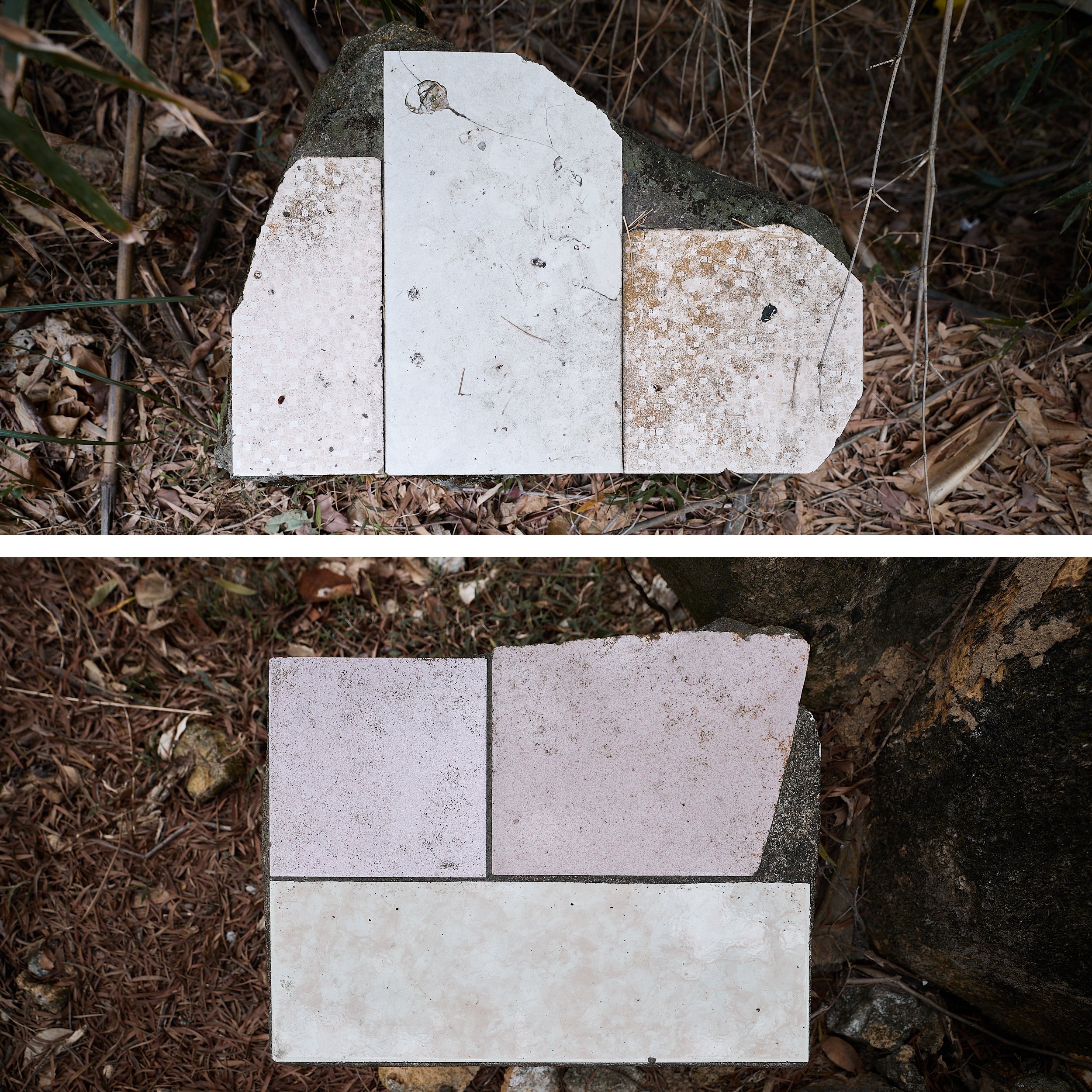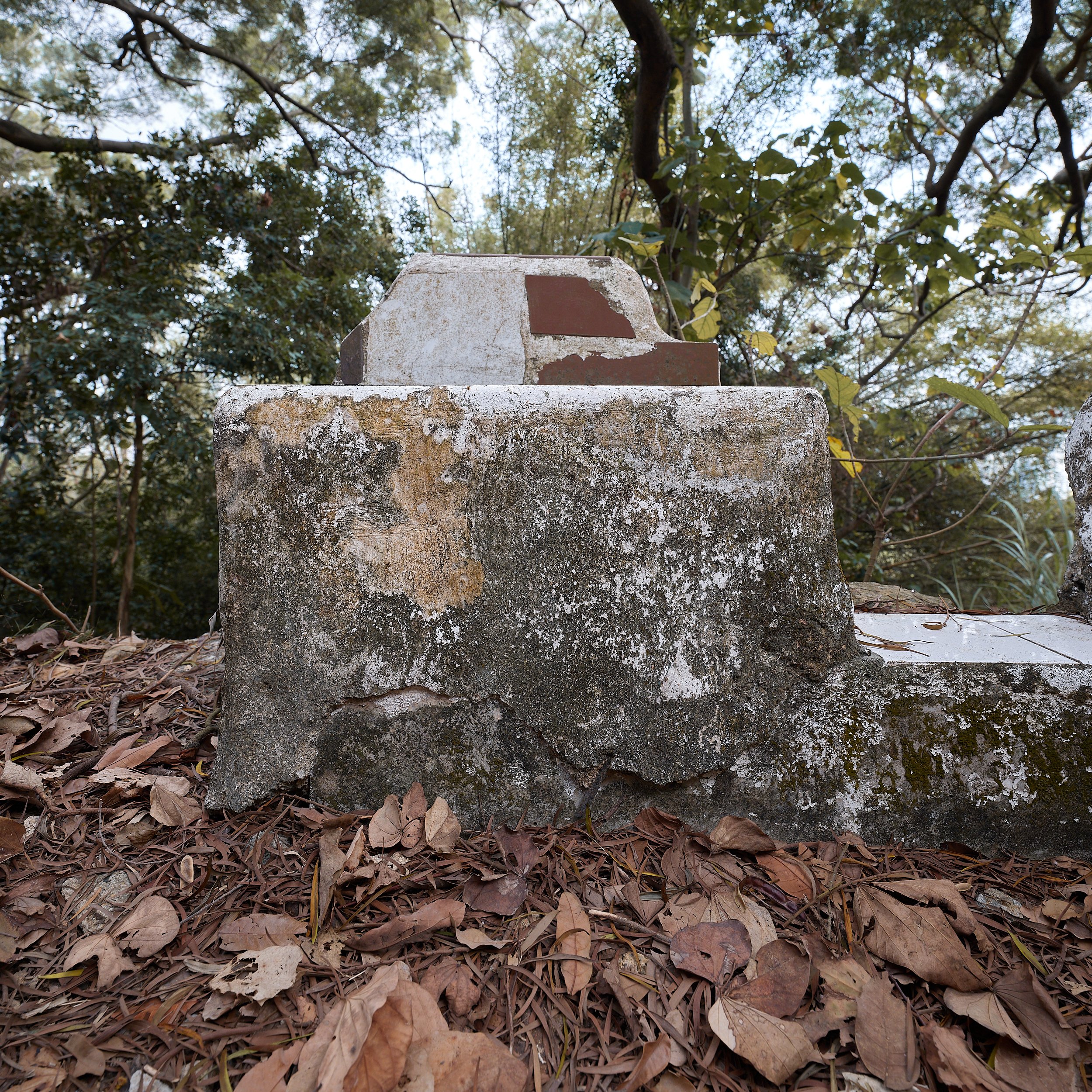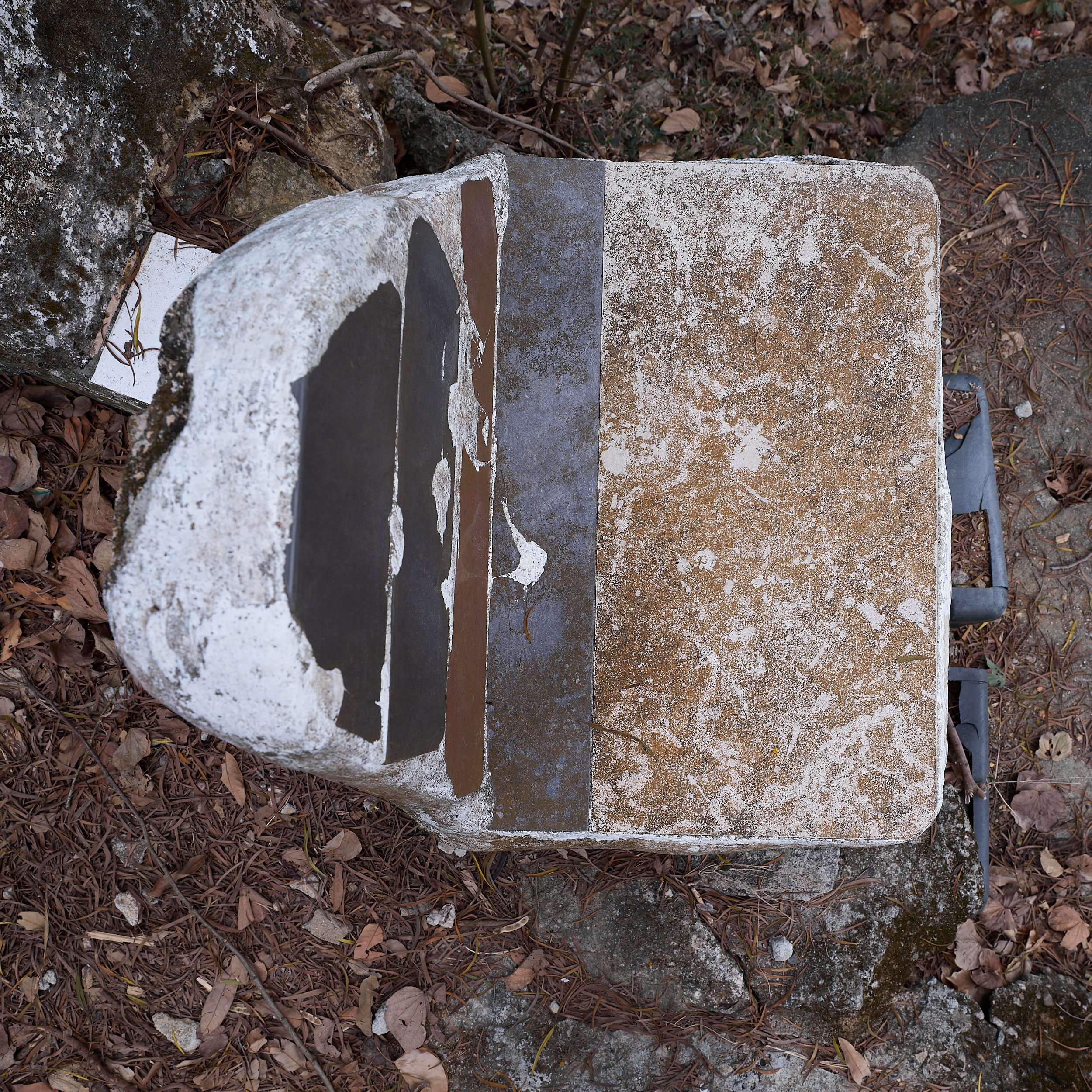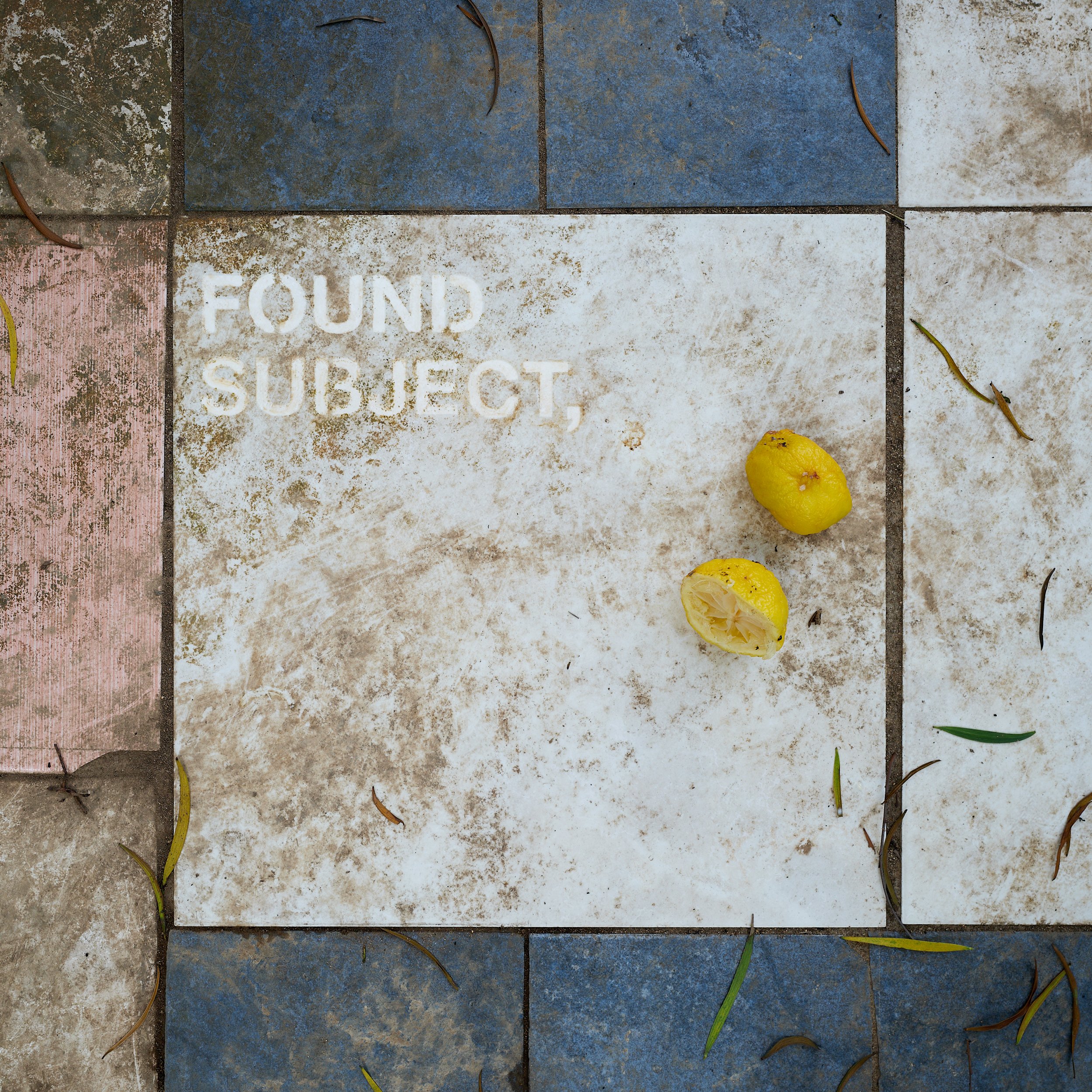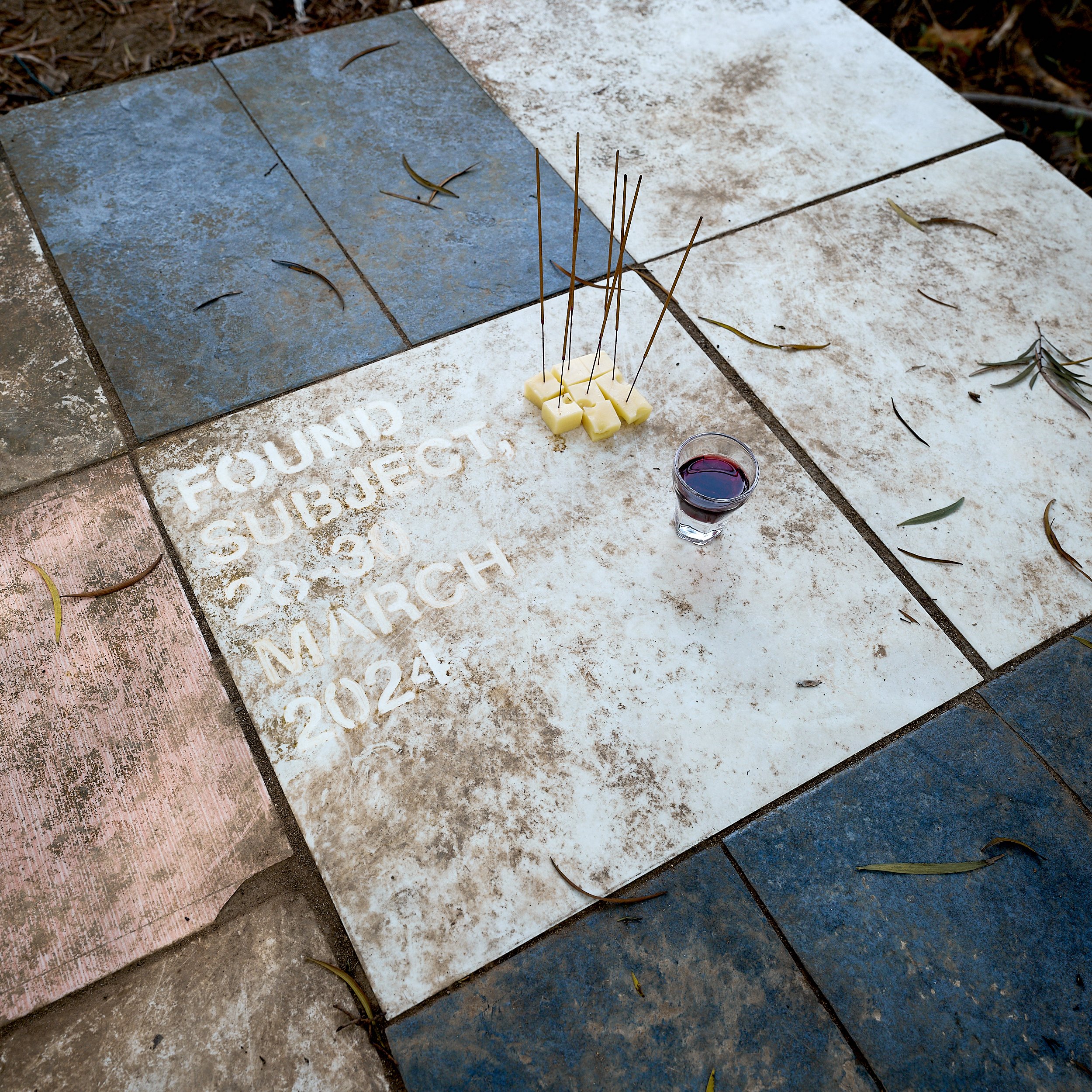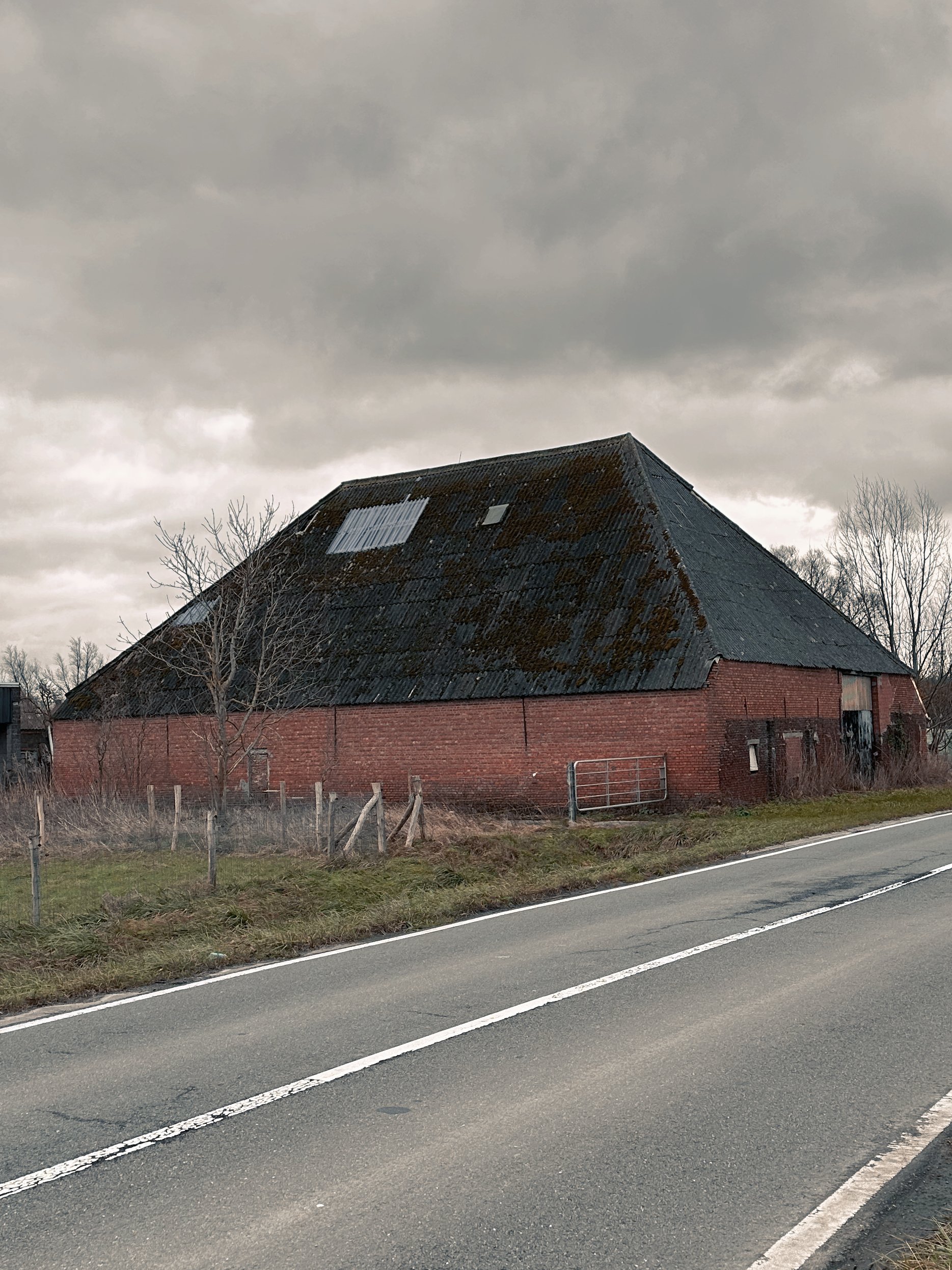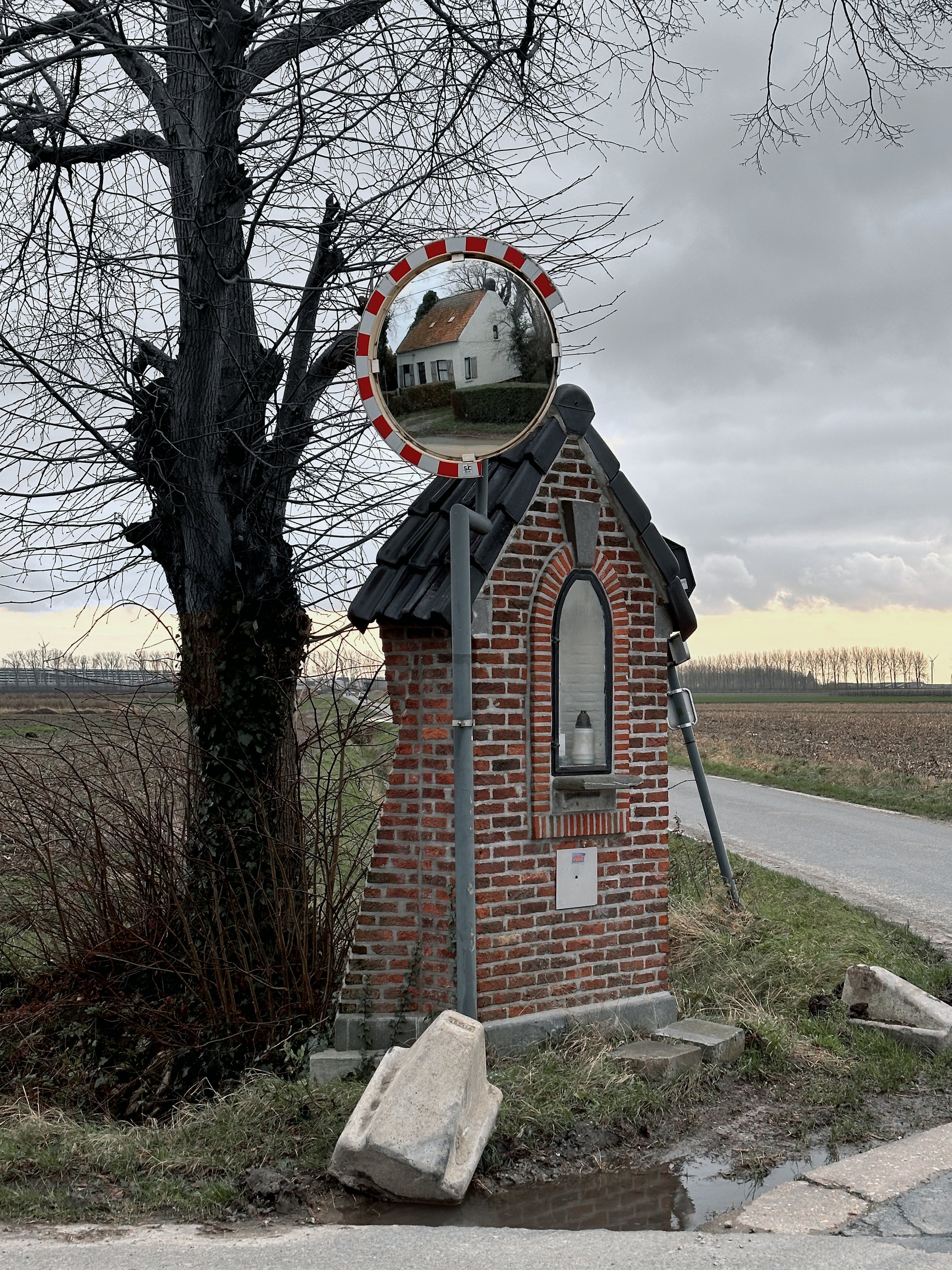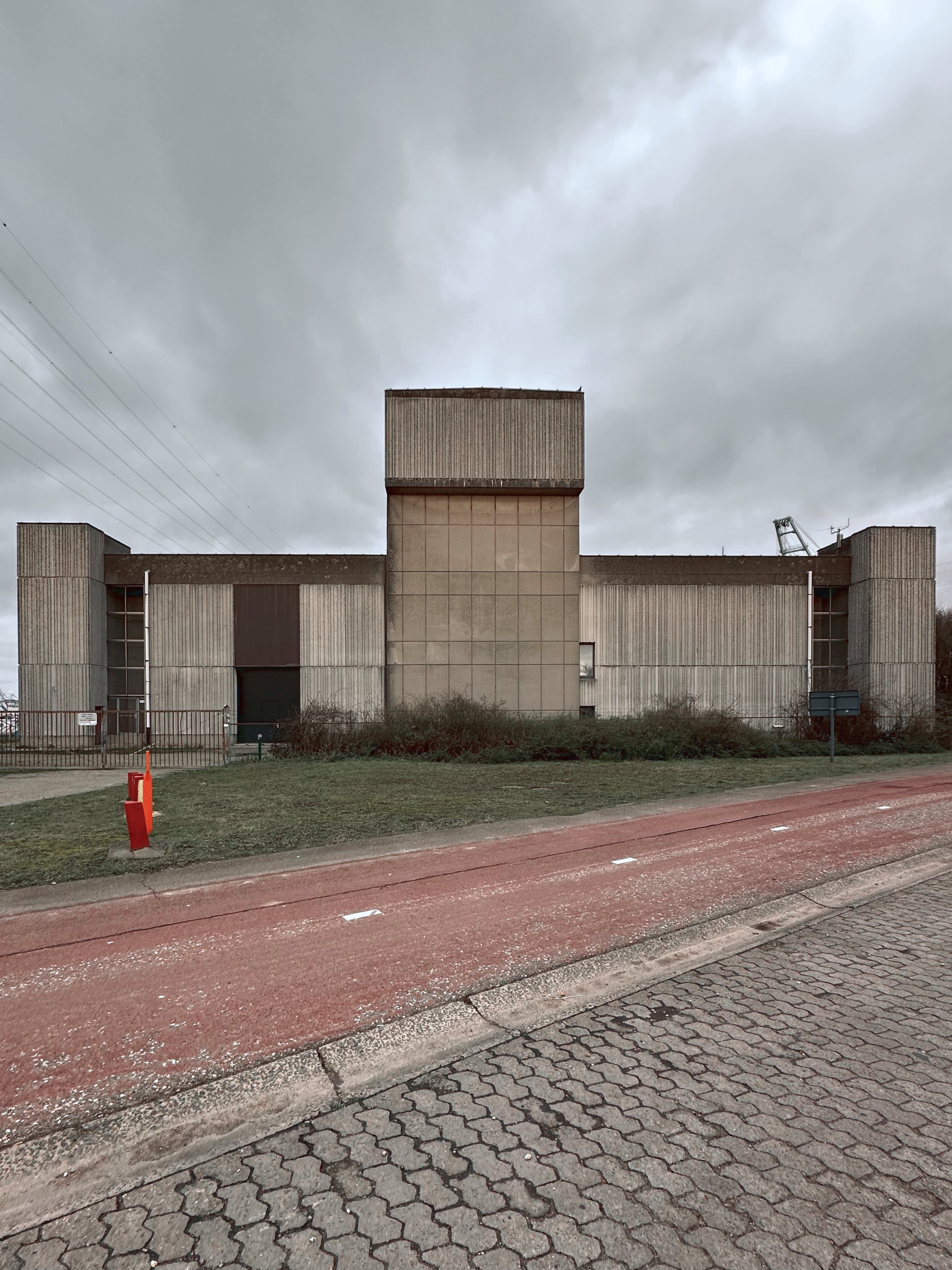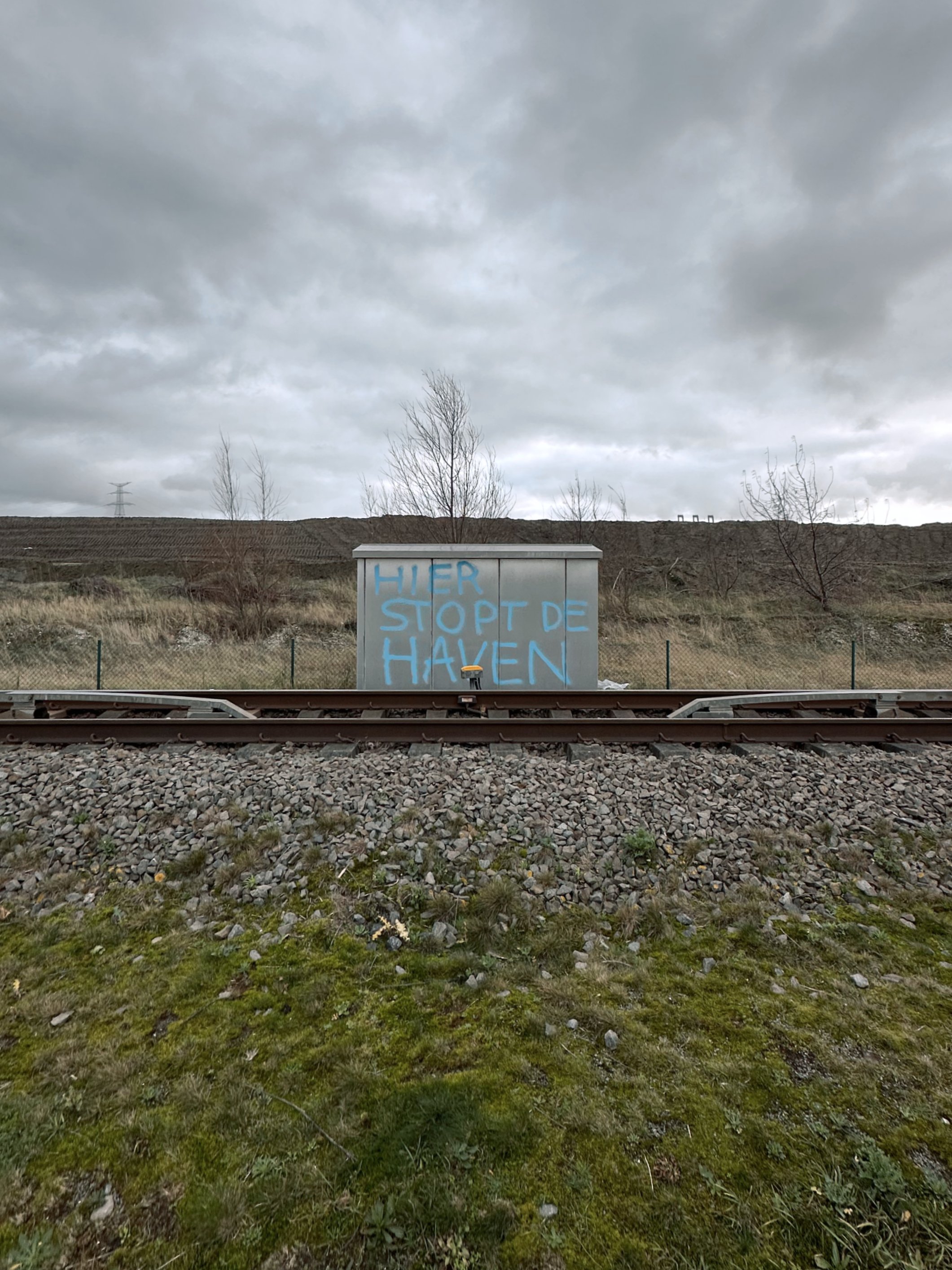FOUND SUBJECT |
||
(Tiled Compositions along a Catchwater Drain) |
||
The exhibition “FOUND SUBJECT (Tiled Compositions along a Catchwater Drain)”, curated by TypicalPlan and WildArtofHK, ran from 28-30 March 2024 at a secret (undisclosed) location in Hong Kong. This coincided with the annual appearance of the Art Basel circus in the city.
The exhibition featured the existing makeshift seats found alongside a catchwater, presumably made by residents of a nearby village. They are fashioned out of concrete, tiles and any other materials the carefree artisans could get their hands on. Despite their rather crude nature, some of them exude an unmistakable artistic quality.
(Besides some apparent embellishments, we are going to assume the makers were not too preoccupied with aesthetics. Otherwise this would just be an instance of Outsider Art we uncovered in the woods and this would rather undermine our argument below — every curation is inevitably a selective reading of reality.)
However, like Duchamp’s Fountain was not really about urinals, this exhibition is only marginally concerned with the aesthetic value of these undomesticated suprematist compositions. Rather, the exhibition “FOUND SUBJECT” seeks to use these odd objects as a gateway drug that leads us into a delirious meditation on the diminished role of the art-object within the art experience.
The art object: lost and found.
The invention of the “Objet Trouvé” (and the Conceptualism built on its foundations) still haunts our museums and galleries. Despite its name, the found object and its successor the readymade shifted the balance of power in art production and appreciation from the “made object” towards the “maker–subject”. In other words: from the artwork to the artist.
Duchamp’s copernican act of iconoclasm simultaneously banalised aesthetics and aestheticised banality (The Conspiracy of Art, Jean Baudrillard, p. 52). Within this flattened landscape, the self-evident nature of art as an exalted object has been lost. We need to rely on a life support system of museums, galleries and dedicated professionals to keep the illusion of art alive. In this context the figure of the artist has become essential. As the artworks themselves have become mute, they can only be understood through the prism of the artist’s intentions and motivations, personal histories and previous works.
As such the art object has turned into a mere representation or illustration of the artistic mind behind it. It has been relegated to the role of interface between the audience and the artist. The idea of the found object really started the era of the lost object: the disappearance of the artwork in favour of the artist.
Capitalism & Conceptualism.
The rise of conceptualism and the accompanying rise in stature of the artist have tracked the rise of capitalism. As a capitalist society we are in thrall to those who create value out of seemingly nothing. We worship the artists who turn the banal into meaning like we worship the investment banker, the bitcoin entrepreneur or the NFT-peddler. This strange alchemy speaks to the deep yearning in all of us who have been taught to live within the confines of the free market.
(The reproach that the art world is now driven by commerce is missing the point. The commerce IS the art. It is a symptom of the sublime stage of capitalism we are living in, where the object or commodity has become unimportant or invisible and only the creation of value is relevant, like in the casino-realities of the stockmarket or bitcoin trading.)
The artwork’s monetary value is not dependent on the significance of the object in itself but on the perceived market value of its maker; the object is just a symbolic representation of this value and so in itself irrelevant — often it languishes in a windowless art storage facility somewhere, like a gold bar in a vault. Investing in an artwork now resembles buying a company share in an artist: it has become a virtual, invisible object which only becomes actualised and visible in the moment of transaction.
Enchanted once again.
With the exhibition “FOUND SUBJECT” we re-centre the art object. By making an exhibition featuring existing objects whose authors remain unknown, we seek to prove that the world outside the global art market has more artistic merit than its self-appointed gatekeepers would want you to believe. If the idea of the found object put the spotlight on the artist-as-subject who magically transforms ordinary objects into valuable art, the exhibition “FOUND SUBJECT” aims to highlight how seemingly ordinary objects can still have a transformational impact on a subject, outside of museums, unbothered by artists.
As such it is a reversal of the principle of the found object that is given the kiss of life by the artist-subject; here it is the object that finds and animates the audience-subject, illuminating the viewer’s mind with explosive artistry. The object stops being a passive representation and regains the initiative. In this suddenly enchanted forest, the objects start speaking to us once again and the artists are nowhere to be seen.
Excerpt from the invite to the exhibition.
This exhibition takes place at a secret location, contributing to the exclusive, high-profile nature of the event but also emphasising the fact that it is not about these specific objects as such. The exhibition only seeks to inspire the audience-as-subject to open its ears to the eloquence of ordinary objects and seek out poignant beauty in the ostensibly mundane reality.
The exhibition runs from 28 until 30 March, concurrently with Art Basel HK. It is to act as a tiny pinprick applied to the hot air balloon of the travelling art circus. As our exhibit is charging up our daily surroundings with potential artistic energy, one may find that it is simultaneously sucking all the hot air out of Art Basel and related events, following the principle of communicating vessels. Please contact the relevant organisers for refunds.
Opening event.
At the opening of the exhibition (attended by nobody) the basic paraphernalia indispensable to a successful art reception (cheese + wine) were transubstantiated into sacrificial offerings to whichever forest-dwelling deity is in charge of anointing artworks, eliminating the need for any middlemen in the form of the pesky art crowd with their shrill voices, perspiring foreheads and witless banter.
Simultaneously a sign marking the official opening of the event was revealed in situ. This sign was meticulously handcrafted through a process of what we call “negative stencilling”, a procedure that relies on locally wiping the grime off the existing tilework using a stencil template, cotton buds and lemon juice. As such this sign embodies the conceptual idea behind the exhibition “FOUND SUBJECT”: art potentially underlies all of reality and can be uncovered as long as we apply the mild acids of a sharp eye and a critical mind to it (yes, the curators still have a hangover from the reception and as such their metaphors do not quite hang together).
dates: 28-30/03/2024
location: undisclosed
curators: TypicalPlan & WildArtofHK
authors text & photos: TypicalPlan & WildArtofHK




